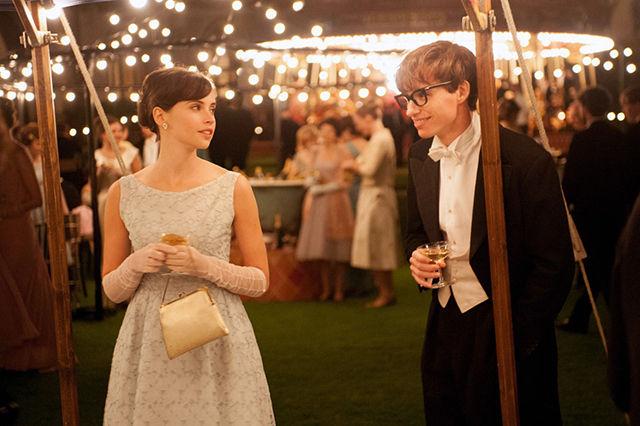Scattered across the history of cinema are emblematic faces carrying the struggle of physical and social ills of real-life people. These tragic forces grab our heroes by the collar and drag them down into dark places. But with dignity that is sometimes hard to fathom, they ultimately rise to occasion.
This manifests itself once again on the big screen with James Marsh’s latest film The Theory of Everything. You’ll be hard-pressed after watching to imagine anyone but Eddie Redmayne portraying the world-renowned scientist Stephen Hawking. Redmayne’s astounding performance demands a spot next to the likes of Chiwetel Ejiofor as Solomon Northup in 12 Years a Slave and Daniel Day-Lewis as Christy Brown in My Left Foot.
Debilitated at age 21 by a motor-neuron disease often referred to as Lou Gehrig’s disease, Stephen grapples with the physical loss of his movement and muscle control while his mind races ahead with groundbreaking theories about the universe and time. As a doctor back in 1963 tells him he’ll only live for two more years, time itself becomes the one thing Stephen doesn’t have.
Of course Stephen despairs over his circumstances due to his young age, but thanks in large part to his girlfriend and future wife Jane (Felicity Jones), he quickly comes to terms with his new reality.
Their love story does not overwhelm viewers, but instead emphasizes a fierce, but sweet dynamic. When they first meet, they shyly glance and grin at each other while at a party full of scientists. But then after Stephen learns of his diagnosis, he tries to push Jane and all his friends away. His tactics, though, aren’t enough to scare Jane off.
More than just strong acting by Redmayne, The Theory of Everything develops the complications and grey areas facing its female lead—something viewers rarely get in any kind of film. Given that the film bases its story on the book written by the real-life Jane Hawking cements the fact that it is more about Stephen’s place in Jane’s life, rather than the other way around.
Jane’s steadfast beliefs and intelligence build the brick-and-mortar of her character. At the time of meeting Stephen, she’s studying art, French, as well as Spanish, and aspires for a Ph.D. in ”medieval poetry of the Iberian Peninsula.” When Stephen and even his family try to dissuade her from staying with him, she reiterates that they’ll get through it together.
As Stephen’s disease progresses, however, it takes more of a toll on their relationship. He eventually loses his ability to walk, speak and eat on his own, leaving Jane to take on the role of Stephen’s hands and legs while she also cares for their three children. Her own studies and happiness get put on the back burner in the process.
The film fearlessly maneuvers the emotional and physical affairs that result from this tension.
Poignant heartache and awe-inspiring courage, though, palpitate throughout The Theory of Everything. In one of the best scenes of the film, Stephen leads a Q&A, following the success of his book A Brief History of Time, with the help of a computer that processes words for him.
An audience member asks, because Stephen does not believe in a god, if he has a philosophy that helps him. At that very moment, a woman in the front row drops her pen, mirroring an earlier scene in the film. His pained expression follows an imagined moment where his body slowly comes back to life and he is able to retrieve the pen for this woman.
The scene then cuts back to real-time as Stephen answers, “There should be no boundary to human endeavor. We are all different. However bad life may seem, there is always something you can do and succeed at. While there is life, there is hope.” The power of his scene chills viewers and simply describing it doesn’t do the scene justice.
The Theory of Everything is one of those rare films that has a universal reach and leaves you trembling with possibilities.








